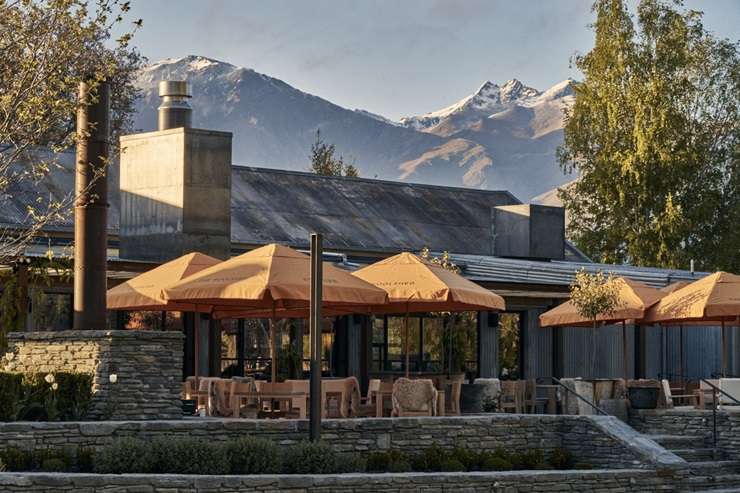New Zealand house prices remained subdued for the sixth month in a row, but aggressive cuts in mortgage rates and a lift in buyer sentiment suggest the market will improve before the end of the year.
While homeowners in the wealthiest parts of the country were enjoying value lifts of up $150,000, the overall picture was somewhat gloomier.
The nationwide average property value hit $957,000 at the end of September, down 1.1% on the $968,000 recorded at the end of June, with the market still reeling from the wider economic downturn and the increase in listings at the start of the year.
Annual property value growth for New Zealand shrank to 0.1% but the weekly numbers from the OneRoof-Valocity House Value Index suggest the market is starting to stabilise. In the four weeks to the end of September, the nationwide average property value saw its first gain since the first quarter.
Start your property search
While it is too early to say if the numbers point to a recovery in prices, other measures in the market offer hope to homeowners.
Confidence is high among economics experts that the Reserve Bank of New Zealand will make further cuts to the Official Cash Rate, with financial markets pricing in at least one cut of 50 basis points before the end of this year.
Consumer research carried out by OneRoof after August’s OCR drop to 5.25% suggests Kiwis are feeling better about the housing market.
The survey of 1000 OneRoof users found the following positives:
- 40% feel the economy will improve over the next 12 months;
- 41% feel the affordability of houses will slightly improve over the next year;
- 54% feel the interest rate announcement will have a significant/moderate impact on them; and
- 21% will make a major decision surrounding property because of the interest rate drop
However, the latest figures from the OneRoof-Valocity House Index highlight weaknesses in the market. Auckland’s average property value dropped 1.1% ($22,000) to $1.276 million in the three months to the end of September and was down 2.4% ($32,000) year-on-year.
The region’s rate of decline has slowed from 3% at the end of July and weekly figures showed a slight increase in September. Still in free fall, though, are Northland (down 2.7% over the quarter to $816,000) and Wellington (down 2.7% to $866,000 over the same period).
Also feeling the squeeze are Manawatu-Whanganui (-2% to $601,000) and Hawke’s Bay (-1.6% to $780,000).
Otago, Tasman, and West Coast all recorded quarterly value growth of 0.9%, although low sales volumes in each suggest a lot of volatility in the numbers.
Only two major metros recorded quarterly growth - Queenstown-Lakes and Dunedin.
Despite being the most expensive spot for property in the country, Queenstown-Lakes saw its average property value rise 1.5% ($31,000) over the quarter to $2.05m.

The Ayrburn dining precinct on the outskirts of Arrowtown, where the average property value has jumped 5.7% over the last three months. Photo / Supplied
A flurry of luxury new builds released to the market and new thirst for trophy homes from wealthy expats and Aucklanders have combined to put upwards pressure on prices, which are now $688,000 higher than they were five years ago.
Dunedin, however, has benefited from lower prices. Its average property value was up 0.1% ($1000) to $681,000. Christchurch dipped 0.1% ($1000) over the quarter, but prices in the city have been flat over the last six months.
Property values in Hamilton and Tauranga were down 1% and 1.5% respectively, while Wellington City saw its average property value drop 2.8% (28,000) to $975,000, its lowest point in more than a year. The capital has been battling job losses and economic gloom, with recent news reports on empty streets and shops adding to uncertainty in the market.
The OneRoof-Valocity figures showed some strong gains and heavy losses in the suburbs.
Less than a quarter of the New Zealand suburbs covered by the Index enjoyed value increases. Unsurprisingly, the suburbs recording the highest house price growth over the quarter were in Queenstown-Lakes. Arrowtown’s average property value jumped 5.7% ($150,000) to $2.78m while Lake Hayes’ was up 4.7% ($125,000) to $2.791m.
The biggest quarterly losses were in the Far North, with 12 suburbs in the Northland district recording value drops of more than 5%. Karikari Peninsula was hardest hit, dropping 12.4% ($97,000) to $686,000, closely followed by Paihia (-10.1%), and Russell and Kaikohe (both down 8.5%).
OneRoof editor Owen Vaughan said while the interest rate environment was becoming more positive by the day, there were still challenges in the market. Sales volumes remained low and stock levels were still high, despite recent falls in new listings numbers, he said.
“Overall, economic sentiment is negative. Non-performing mortgages have reached a decade high; GDP was down 0.2% for the June quarter, unemployment currently stands at 4.6% and is forecast to rise to 5% by 2025, and net migration is declining. While prices are expected to recover, the return to healthy market conditions will be slow.”
However, Vaughan said the OneRoof consumer survey results indicated the gloom was lifting. “Interest rate cuts haven’t had an impact on prices yet, but they have had an immediate effect on Kiwis’ perceptions of the market. Cheaper home loans and lower bills at the end of the month are making people feel more confident about buying and selling. That sets the scene for a lift at the end of the year and in 2025.”
- Click to find properties for sale













































































